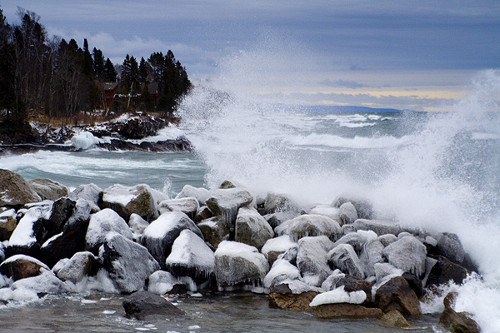EchoLink will work on Linux using WINE. It works but sometimes can be a little flaky. I am not a huge EchoLink user but I do want it work properly as I talk with some other folks that are interested in building radio and electronics gear.
There is an Open Source project call SvxLink that offers a client (QTEL) and a server component.
http://sourceforge.net/projects/svxlink/The challenge that I have is that they only have pre-built packages for Fedora based distros that can use RPMs. I use Ubuntu which is based upon Debian which uses DEBs for installation packages. In theory this should not be an issue because they list the sources files and give you instructions for how to compile it for your platform.
http://sourceforge.net/apps/trac/svxlink/wiki/InstallSrcUbuntusudo apt-get update
sudo apt-get install g++ libsigc++-1.2-dev libgsm1-dev libpopt-dev tcl-dev libgcrypt11-dev libspeex-dev make alsa-utils
sudo apt-get install libqt3-mt-dev
wget http://downloads.sourceforge.net/svxlink/svxlink-090426.tar.gz
tar xvzf svxlink-090426.tar.gz
cd svxlink-090426
make
sudo make install
In theory that is pretty simple... until you throw an error! I am running Ubuntu 9.10 32bit and it appears that some important things might have changed since the instructions were written for 8.04 and 8.10.
--- Compiling AsyncSerialDevice.cpp...
AsyncSerialDevice.cpp: In member function ‘void
Async::SerialDevice::onIncomingData(Async::FdWatch*)’:
AsyncSerialDevice.cpp:299: error: ‘perror’ was not declared in this scope
make[3]: *** [AsyncSerialDevice.o] Error 1
make[2]: *** [all] Error 2
make[1]: *** [all] Error 2
make: *** [all] Error 2
It appears that a couple of folks are talking about tweaking this install and then creating a deb. So what does a person do until that is available? --Of course... you Google to see if you can find someone that already has made a deb for testing. I found an old build at:
http://hb9hli.radioamateur.ch/public/ubuntu/svxlink/ Install the couple of debs that are listed and you should be in business. I was able to get this to run on an ASUS EEE 900HA with Ubuntu 9.10 in about 2 minutes.
The images show the QTEL client.


This version appears to be pretty old. It runs and appears to be pretty stable based the initial testing that I did with the EchoTest conference room. At some point I would like to get the newer client running so that I can get visual feedback on my audio levels.
This tool is not as full featured as the standard EchoLink client but it appears that all of the important pieces are there and it appears to be more stable than running EchoLink under WINE.
Ok... enough time playing computer for this morning. I need to run some errands. Once I get those done I hope to make it back to the work bench and work on some radio and electrical projects. I will probably test QTEL out tonight on the QRP conference around 8:15pm central time.
73 de NG0R
PS... Here is another location to try:
http://www.chrisronk.net/ham/linux.htmChris has converted the RPMs to Debs with Alien. It was on my to-do list but it looks like he might have it working. I am going to try it on another laptop that is headed to workbench but is not critical around here.





















